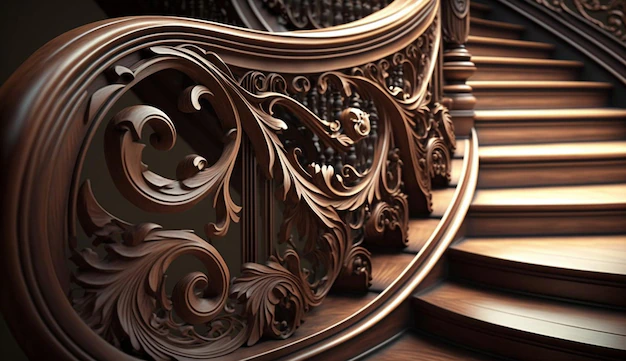Introduction
Many cultures throughout the world have used wood carving, an elaborate and age-old art form, as a means of expression for generations. Beyond just being aesthetically pleasing, wood-carved artwork frequently has deep symbolic implications that tell tales, evoke feelings, and protect cultural heritage. In this investigation, we explore the intriguing realm of wood-carved art and attempt to interpret the meanings concealed in the fine details of sculptures.
I. Woodcarving’s Historical Origins
It is essential to investigate the historical origins of wood carved art in order to comprehend its meaning. Wood carving has always been a vital form of artistic expression, as seen in the elaborate carvings of medieval Europe and the ancient civilizations of Egypt and Mesopotamia. This section examines the development of wood carving, emphasizing the art form’s cultural significance and the variety of methods used by artists over time.
II. Diversity of Cultures: Styles and Methods
Wood carving is a flexible art form that has been adopted by many cultures, including a variety of styles and techniques. This section explores the range of wood carving traditions around the world, from the dramatic, narrative-driven sculptures of African tribes to the exquisite filigree of Chinese wood carvings. We can start to decipher the layers of symbolism hidden in each artwork by comprehending the distinctive styles and methods used by other cultures.
III. Nature’s Symbolism: Fauna and Flora
A common motif in wood-carved artwork is the depiction of natural elements, including flora and fauna. Animals, trees, and other aspects of nature frequently have symbolic connotations that are culturally specific. This section examines the meanings associated with various natural elements in wood carvings, illuminating the ways in which artists employ these symbols to express ideas like rebirth, life, death, and the interdependence of all living things.
IV. Symbolism in Religion and Spirituality
Religious and spiritual beliefs are closely entwined with many wood-carved artworks. Religious sculptures such as Buddhist altarpieces, Hindu deities, or Christian altarpieces have all used wood carving as a means of conveying devotion and examining the divine. This section explores the religious symbolism inherent in wood-carved artwork and how artists use their medium to express the indescribable and tell spiritual stories.
V. Political Statements and Social Commentary
Art with wood carvings has frequently been a potent vehicle for political and social commentary. Wood carvings have been utilized by artists to highlight social injustices and offer commentary on human nature, ranging from witty caricatures to moving portraits. This section examines the ways in which wood-carved artwork functions as a vehicle for social criticism, introspection, and protest against various historical social issues.
VI. Self-Expression: Human Experience and Emotions
In addition to its deeper cultural and societal meaning, wood-carved art serves as a vehicle for individual expression. This section looks at how artists investigate the depths of the human experience, tell intimate tales, and communicate emotions via their work. We can learn about the feelings, tribulations, and victories of the artist by closely examining the minute intricacies and nuances of wood-carved sculptures.
VII. Cultural Heritage Preservation
In this age of fast globalization, wood-carved artwork is essential to maintaining cultural legacy. This section examines the various ways that wood carving is used by various cultures to transmit customs, tales, and creative methods from one generation to the next. We may gain a deeper understanding of the significance of wood carving as a cultural relic and a timeless mode of expression by looking closer at the symbolic components included in these pieces of art.
Conclusion
The meaning found in wood-carved artwork is a complex and diverse tapestry that intertwines personal, spiritual, and cultural tales. Wood carving is still a potent medium for artistic expression and communication, both in its historical roots and in its modern iterations. Understanding the hidden meanings inside these sculptures helps us better appreciate the complex language of wood-carved art and the lasting impact it has on coming generations.

